从珊瑚坝到T3A,重庆机场的那些事儿
◇ 文 |本刊记者 陈科龙 图|游 宇 受访者提供
从珊瑚坝到T3A,重庆机场的那些事儿
◇ 文 |本刊记者 陈科龙 图|游 宇 受访者提供
最近两个月,重庆江北国际机场成了“网红”,刷屏朋友圈。
为啥?答案在这里:历时5年建成的重庆江北国际机场T3A航站楼和第三跑道,2017年8月29日正式投用。这一来,重庆江北国际机场成为继北京首都机场、上海浦东机场、广州白云机场后,国内第四座拥有三条跑道同时运行的机场。
先来看一个现场:2017年8月29日凌晨5点,天还没亮,温宏夫妻俩就带着儿子匆匆赶到了重庆江北国际机场T3A航站楼,孩子将搭乘SC8880航班前往山东烟台上学。航站楼灯火通明,人头攒动。凌晨6点20分,一架波音737在第三跑道徐徐滑行,逐渐提速,向着苍穹抬起了头。
其实,他们并不知道,这不是一趟寻常的航班——他们的孩子,成了重庆江北国际机场T3A航站楼及第三跑道投用后的首批旅客。
In the past two months, Chongqing Jiangbei International Airport has become a hit on Wechat.
After 5 years’construction,T3A and the 3rd Runway were put into use on Aug 29. Thus, following Beijing Capital Airport, Shanghai Pudong Airport and Guangzhou Baiyun Airport, Chongqing Jiangbei Airport has become the fourth in China to have three runways operating simultaneously.
Here is a scene: At 5 a.m. on Aug. 29,Wen Hong arrived at T3A with his wife and son in a hurry. His son was going to take Flight SC8880 bound for Yantai for school. The terminal is bright and crowded. At 6:20 a.m., gliding on the 3rd runway slowly, one Boeing 737 aircraft gradually sped up and rose to the sky.
They never expect the special flight on which their kid was among the first batch of passengers immediately after T3A and the 3rd Runway were officially opened.
竹棚搭建的“候机厅”
Departure Hall under a Bamboo Shed
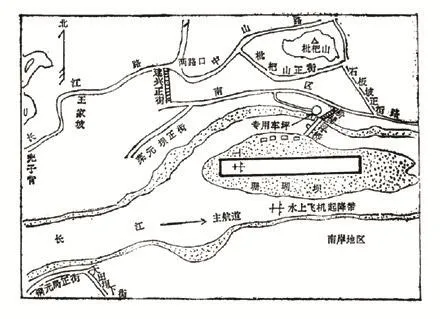
上图:珊瑚坝机场示意图
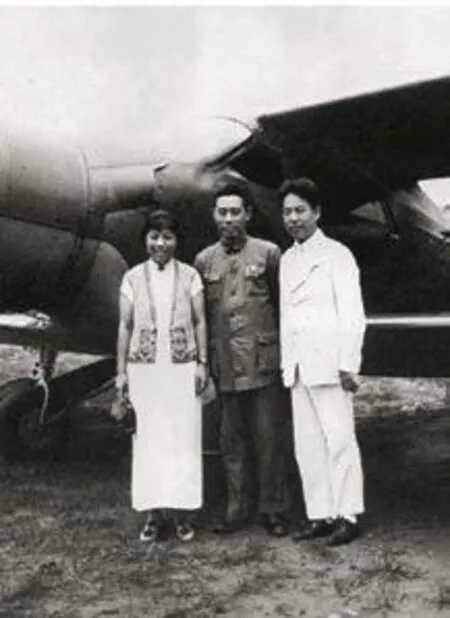
左上:1940年7月,周恩来由重庆返回延安,登机前和邓颖超张冲(右)在重庆珊瑚坝机场留影。
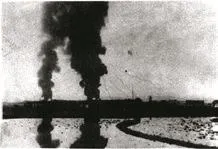
左下:1949年11月底,国民党逃跑时对白市驿机场进行轰炸。

① 为旅客办理登记手续

② 中国民用航空客票

③ 90年代的机票

④ 90年代的机票
抗战期间任重庆复旦大学教授的作家靳以一定想不到,重庆机场从珊瑚坝开始,历经了白市驿机场和江北机场,如今已位居全国机场旅客吞吐量第九,跻身全球繁忙机场行列。他曾在1941年写下《珊瑚坝》一文,描绘了70多年前的重庆机场——
人多了,嘈成一片,连那办事员也皱起了眉头,咕噜着:“从香港来,从仰光来,从桂林来,从成都来,从兰州来,从昆明来——到香港去,到仰光去,到桂林去,到成都去,到兰州去,到昆明去。”
他笔下的珊瑚坝机场,曾是重庆最早的陆上民航机场,如今,是重庆石板坡长江大桥下的一片“沙滩”。当年,珊瑚坝机场建成后,由于旅客逐渐增多,次第开通了重庆至成都、贵阳、昆明等航线。抗战期间,珊瑚坝机场更是繁忙,既开辟了往返大后方的航线,又承接了运送战略物资的驼峰航线,远航至印度汀江、缅甸仰光,乃至中亚的阿拉木图。
但它的命运很快被改变了。由于珊瑚坝位于江心,是江水常年冲积形成的一片大沙洲,夏季洪水期常被淹没,冬季枯水期才会露出水面。所以,机场内并没有永久性建筑,每年夏汛后即在场内搭建起几十间竹棚作为办公室与“候机厅”,夏汛来时再将其拆除。1950年,由于长江涨水,重庆机场搬迁至白市驿,珊瑚坝机场从此退出历史舞台。
Professor JinYi of Chongqing Fudan University during Anti-Japanese War, could have never imagined Chongqing Airport, first built at Shanhuba, would later be transferred to Baishiyi and Jiangbei afterwards, and now has evolved as the 9th biggest airport in terms of passenger throughput. In his article Shanhuba, written in 1941, he described the Chongqing Airport as followed:
With crowds of people and bursts of noise, even the officers started to frown, whispering“from Hong Kong, from Rangoon, from Guilin, from Chengdu, from Lanzhou, from Kunming, to Hong Kong, to Rangoon, to Guilin, to Chengdu, to Lanzhou, to Kunming…’’
Shanhuba Airport, now a beach of sands under Yangtze Bridge, was the earliest land civil aviationairport in Chongqing. It gradually opened flights to Guilin, Chengdu, Kunming and so on as demands were increasing after it was put into use. Traffic got much heavier during Anti-Japanese War, for both routes to Big rear and the hump airlines exclusively for transferring strategic materials were started. The lines even stretched to Dinjian, India, Rangoon, Myanmar and Alma-Ata in Central Asia.
However, Shanhuba was a stretch of shoal in the center of Yangtze River, and it was often under water surface in summer while did not come out until winter. Thus, the offices and terminal were purely built from bamboos that were easy to be removed instead of any permanent buildings. In 1950, it had to be moved to Baishiyi due to heavy flood.
没有廊桥和摆渡车
Without Lounge Bridges and Shuttle Buses
透过T3A航站楼候机大厅的玻璃幕墙,可以看到登机廊桥,造型如同一把微微打开的剪刀。它拥有两个固定通道,分别连接出发厅和到达厅,可以提高旅客中转的效率。
镜头切回白市驿机场,它初建于1938年11月,位于白市驿镇一条南北走向的浅丘地带,西面有些不规则的山头,东面则是中梁山脉,这片狭长的土地算得上是重庆较为平坦的地方。新建成时,旅客和航班少,机场也小,尚没有登机廊桥,也没有摆渡车,旅客登机得提着行李走到登机舷梯口,幸而停机坪上只有一架客机,不必担心上错飞机。
上世纪八十年代,白市驿机场新建了候机楼和指挥塔,候机楼有1个迎宾厅、4个候机厅和1个行李提取厅。“候机楼在当时算是先进,装有空调,还有电子翻板航班动态显示装置和提取行李的转盘。”曾参与编撰《重庆民航志》的周印富,清楚记得三十多年前的白市驿机场。
Seeing through the glass wall in T3A,we can find the lounge bridges are like scissors with two fixed passages linking to the departure and arrival hall respectively to improve the transfer efficiency.
Back to October in 1938, Baishiyi Airport was built on a hilly site that could be counted as a flat area in Chongqing. When newly built, it was so small that there were few passengers and flights, and the lounge bridge and shuttle bus were not available, too. Passengers had to carry luggage by themselves to the boarding gate without worrying about taking wrong flights since only one airplane was waiting in the parking apron.
In the 1980s, new terminals and control towers were built, including one guest hall, four waiting halls and one luggage hall. “With AC and dynamic e-flight display devices and luggage-carrying turn-plates, this terminal was listed in advanced ranking.”Zhou Yinfu, who participated the compile of Chongqing Civil Aviation Magazine, clearly remembered the situation over 30 years ago.
手工登机牌的年代
Days of Using Hand-written Boarding Cards
2017年8月29日凌晨的T3A航站楼内,旅客们井然有序地在值机柜台前办理手续,还有旅客在自动值机柜台前试着自助办理托运和登机牌。对于这样现代化的智慧机场,家住石柱县城的马勤煊20多年前还不曾料到。1992年,由于印刷厂急需采购印刷仪器,马勤煊被派往广州商洽仪器采购,第一次在江北机场搭乘了飞机。
那时乘坐飞机必须要由县团级以上的单位开具介绍信。马勤煊拿着县政府开的介绍信,从县城坐汽车来到高家镇,然后乘船到朝天门码头,最后在上清寺民航售票处买到了机票。机票并非现在的一张卡片,更像是一本小册子:机票上有封皮,印着航空公司的名字,打开后有旅客联、财务联、结算联,都是由工作人员手工填写,封底则印有旅客须知等内容。

① 气源车
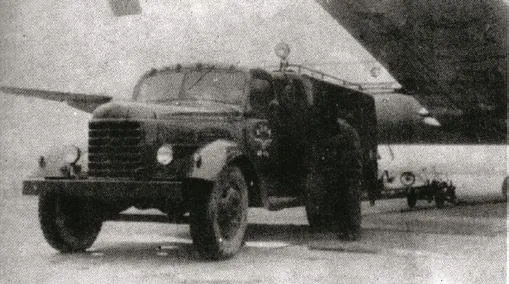
② 电源车
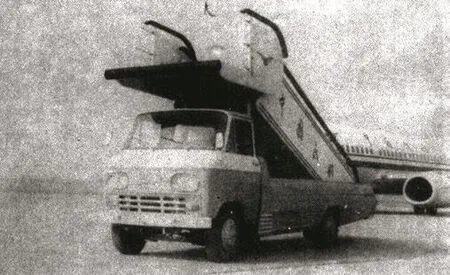
③ 客梯车
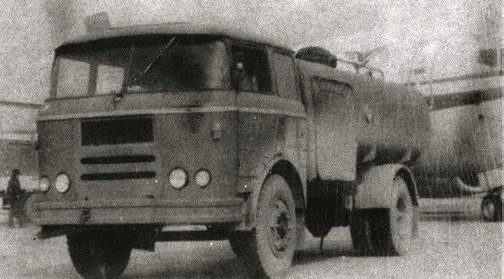
④ 加油车
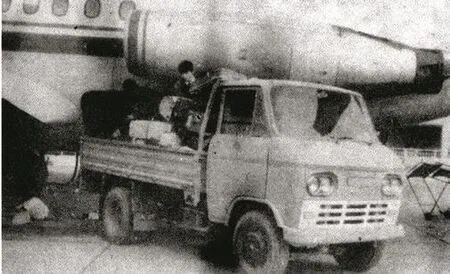
⑤ 行李车
除了手写机票,工作人员要事先计算好一次航班的座位,再告诉值机柜台有没有限载,哪些座位可以值机,然后值机柜台的地勤人员制作出一张张座位标签。旅客值机时,地勤人员核对完纸质机票和身份证后,会在手工制作的登机牌与行李牌上盖章、贴好座位号,如此才算完成了一份登机凭证。每位旅客的值机信息,也都要手工记录。可想而知,那时坐飞机,即使国内航班也必须提前好几个钟头到机场。
值机完成后,马勤煊带着新奇感和陌生感坐上了飞机。起飞后,他的心悬在了半空,落地了,机舱门打开后,他挤在最前面下了飞机。两脚一落地,全身感到从没有过的轻松,从心底喘了几口大气。
Early in the morning on Aug 29, some passengers were checking in at the counters, and some were trying selfcheck-in by those machines in T3A. Ma Qinxuan from Shizhu County never imagined such a smart airport 20 years ago. In 1992, he was sent to Guangzhou for a business trip and took a plane for the first time at this airport.
Back then, one must to obtain an introduction letter granted by government to take a plane. With this letter, Ma took a bus to Gaojia Town, and then a ship to Chaotianmen, and at last bought the ticket at the ticket office in Shangqingsi. The air ticket was more like a booklet than a card, on the cover of which was written the airline company while the passenger and finance coupon all filled by the staff, notes for passengers on the back.
Besides filling in tickets, the staff must count the seats and inform the check-in counter whether there was a loading limit. Then the ground crew made seat tags one by one. After checking the paper ticket and ID, the ground crew would stamp on the boarding card and luggage card and then paste the seat number. The check-in information of each passenger must be recorded by hand. Even to take the domestic flight, it was advisable to get to the airport ahead of hours.
After check-in, Ma got on the airplane in curiosity, nervous, and rushed first to get off the plane when it landed. He had never felt so relaxed before.
江北机场再次起航
Jiangbei Airport Sets to Sail Again
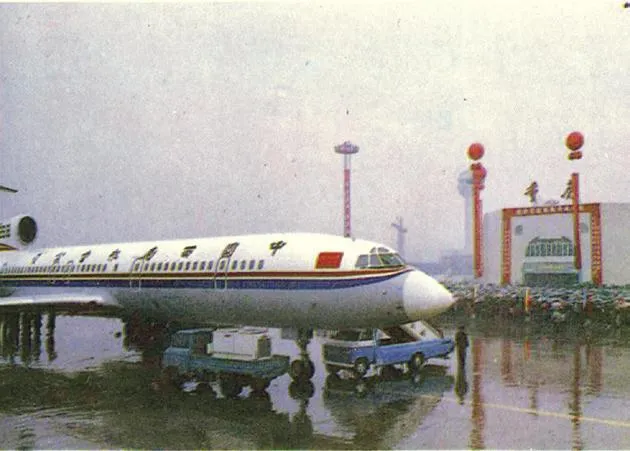
重庆江北机场开航典礼
2017年8月29日重庆T3A航站楼启用后的首个航班,6时 20分起飞,由山东航空执飞。乘坐这趟航班的河北人陈先生,这次从海口到成都出差,原定从成都直接返回海口,得知重庆T3A航站楼当日启用,专程来重庆转机。
陈先生脚下的江北机场,今年已经27岁了。1990年1月22日,江北机场举行开航典礼,在上千名市民的注视下,第一架民航班机升空,自此开启了重庆民航新的里程碑。
2009年,重庆机场准备建设第二条跑道,初始设计长度3200米。此时正值重庆和惠普谈判的关键时刻。重庆希望惠普能来渝建立笔记本电脑全球制造中心。惠普高层的要求之一是机场跑道必须达到3600米,这一长度可以满足波音747全货机满载起降要求。次年12月21日,T2A航站楼及3600米的第二跑道正式投用。
随着重庆江北国际机场T3A航站楼及第三跑道的投用,T3A航站楼可以满足年旅客吞吐量4500万人次、货邮吞吐量110万吨、飞机起降37.3万架次,而长3800米、宽度75米的第三跑道可以起降当今最大的“空中巨无霸”空客380,以及波音787等大型客机。重庆江北机场飞行区等级提升到了4F级,江北机场形成南客北货、东西双航站区运行的格局。
重庆作为西部大开发的重要战略支点,处在“一带一路”与长江经济带的联结点上,在国家区域发展和对外开放格局中具有独特而重要的作用,机场不仅成为城市生活中的一部分,承担远距离运输,巨大的吞吐量更是带来了庞大的人流量,为经济发展注入了新的活力。
On Aug. 29, the maiden flight in T3A was executed by Shandong Airline. Mr. Chen from Hebei province was on a business trip from Haikou to Chengdu. He could have taken the direct flight back to Haikou. But when he got to know T3A was about to put into use that day, he intended to transfer at Chongqing.
Jiangbei Airport has a history of 27 years. On Jan. 22, 1990, an opening ceremony was host here. Thousands of citizens witnessed the lift-off of the first flight marked as a new milestone in civil aviation of Chongqing.
In 2009, the 2nd Runway was designed to built at a length of 3200 meters, when the negotiation between Chongqing municipal government and Hewlett-Packard(HP) was going on to a crucial period. The government hoped HP could set global manufacturing center of laptops in Chongqing, while top leaders of HP demanded the runway must be 3600-meter-long to ensure Boeing 747 taking off even in full load. On Dec 21, 2010, T2A and the the 3600-meter-long runway were put into use.
Now, T3A can accommodate 45 million passengers, 1.1 million tons of goods, and make 373 thousand times of take-off possible. The 3rd Runway, 3800-meter-long and 75-meter-wide, can hold the “air jumbo’’ Airbus 380 and Boeing 787. The level of its airspace has ascended to 4F,forming a pattern of passenger transport located in its south while cargo in north, and terminal areas operated in its east and west.
Chongqing, as the crucial strategic pivot of West Development and linkage of “Belt and Road Initiative” and Yangtze River Economic Belt, plays a unique and vital role in regional development and opening-up. As an inseparable part of urban life, the airport undertakes the task of long-distance transportation. Moreover, the bulky throughput capacity brings huge passenger flow, injecting new impetus to economic development.
Tales of Chongqing's Airports from Shanhuba to T3A
Article | Chen Kelong Pictures | You Yu Interviewee

